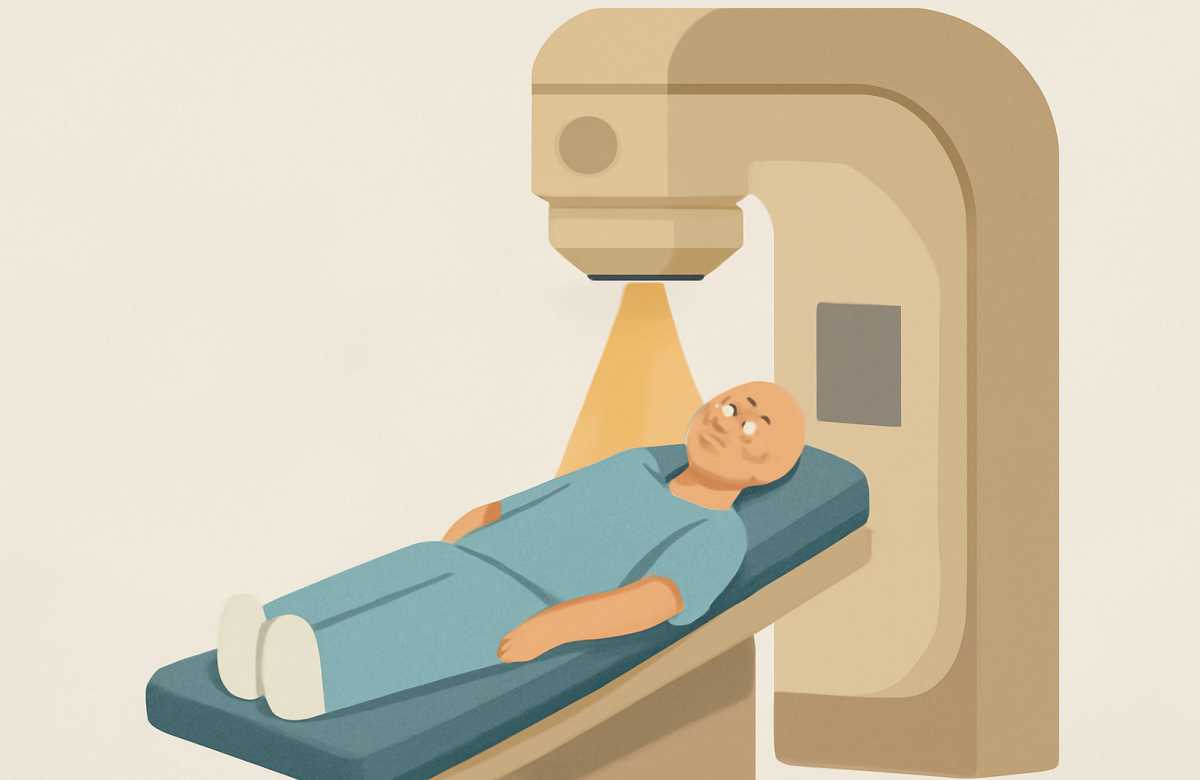Over the years, cancer treatment choices have changed, therefore offering patients a variety of weapons to combat the illness. Chemotherapy (chemo) and radiation therapy are among the most used therapies. Depending on the kind, stage, and area of the cancer, these two treatments are sometimes employed together or apart. But, their mechanisms and general body effects vary greatly. As patients and their families negotiate the difficult road of cancer treatment, knowledge of the difference between chemo and radiation therapy becomes absolutely vital. This post will discuss the differences between chemotherapy and radiation treatment, their advantages, and possible disadvantages.
What is Chemotherapy (Chemo)?
A treatment using strong medications to kill cancer cells or prevent their growth is chemotherapy. The medications can be given by injection, orally (pills), or intravenously (via an IV). Chemotherapy targets cells that divide quickly, therefore fitting cancer cell characteristics. But it can also harm healthy cells that divide fast, such those in the hair, mouth, and digestive tract, which is why chemo usually has side effects.
Chemotherapy is systemic; the medications go throughout the whole body and can impact cancer cells wherever they may be found. Most often, it is used to treat malignancies that have spread beyond their initial site (metastasized), or when there is a possibility of recurrence following surgery. Occasionally, chemotherapy is the main therapy; other times, it is used to reduce tumors prior to radiation treatment or surgery.

What is Radiation Therapy?
Also called radiotherapy, radiation therapy uses high-energy radiation—X-rays or protons, for example—to kill or harm cancer cells. Unlike chemotherapy, which is systemic, radiation therapy is a local treatment, targeting certain parts of the body where cancer is prevalent. Radiation prevents cancer cells from growing and dividing by destroying their DNA. Damaged cells die.
Often, radiation therapy is utilized to treat isolated cancers or to reduce their size prior to surgery. For malignancies that have not spread widely, it can be a rather successful therapy. The treatment can be administered either externally, with a machine directing the radiation at the tumor, or internally by inserting radioactive material directly into the body close to the cancer cells; this latter approach is called brachytherapy.
What is the Difference Between Chemo and Radiation Therapy?
Now that we understand the basic definitions of both therapies, let’s break down the differences between chemo and radiation therapy:
Type of Treatment:
Chemotherapy is a systemic treatment, meaning the drugs are circulated throughout the entire body.
Radiation therapy is a local treatment that targets specific areas of the body.
Mechanism of Action:
Chemotherapy uses drugs to kill or stop cancer cells from dividing.
Radiation therapy uses high-energy radiation to damage the DNA inside cancer cells, preventing them from growing or causing them to die.
Application:
Chemotherapy is often administered through an intravenous drip, injection, or orally, and it works throughout the whole body.
Radiation therapy is usually delivered by external beams focused on the cancerous area, or internal radiation can be used in some cases.
Side Effects:
Chemotherapy often has side effects such as hair loss, nausea, fatigue, and a weakened immune system. Since chemo affects all rapidly dividing cells, it can harm healthy cells as well.
Radiation therapy may cause skin irritation, fatigue, and localized side effects like sore throat or digestive issues depending on the area being treated. However, its side effects tend to be more localized compared to chemotherapy.
Treatment Duration:
Chemotherapy is often given over several weeks or months, with cycles of treatment followed by rest periods.
Radiation therapy typically involves a series of sessions over a few weeks, usually five days a week, with each session lasting only a few minutes.
Treatment Areas:
Chemotherapy is used to treat cancers that have spread to multiple parts of the body or when there’s a risk of metastasis.
Radiation therapy is used for localized cancers or to treat areas where cancer is present and can be targeted precisely.
Use in Treatment Plans:
Chemotherapy is often used as part of a combination treatment, which may include surgery, radiation, or other therapies.
Radiation therapy may be used before surgery to shrink a tumor, after surgery to kill any remaining cancer cells, or as the primary treatment for localized cancers.
Pros and Cons of Chemotherapy and Radiation Therapy
Depending on the kind of cancer and the particular patient, every treatment offers advantages and disadvantages. Let us investigate the benefits and drawbacks of radiation therapy and chemotherapy.
Chemotherapy:
Pros:
Systemic treatment: Chemotherapy can treat cancer that has spread to various parts of the body.
Versatile: Chemotherapy is used for many types of cancer, including leukemia, lymphoma, and cancers of the breast, lung, and colon.
Adjuvant therapy: Chemotherapy can be combined with other treatments like surgery or radiation to enhance the overall treatment plan.
Cons:
Side effects: Chemotherapy often causes side effects such as nausea, vomiting, hair loss, and a weakened immune system, which can significantly impact the patient’s quality of life.
Impact on healthy cells: Chemotherapy affects both cancerous and normal fast-growing cells, leading to side effects that aren’t limited to cancer cells.
Fatigue: Many patients experience extreme fatigue during chemotherapy, which can limit their daily activities.
Radiation Therapy:
Pros:
Localized treatment: Radiation therapy targets only the area of cancer, minimizing damage to surrounding healthy tissues.
Effective for localized cancers: It’s often effective for cancers that haven’t spread to distant areas of the body.
Can shrink tumors: Radiation can shrink tumors before surgery or help reduce symptoms by shrinking tumors in cases of palliative care.
Cons:
Skin irritation: Radiation therapy can cause skin burns, dryness, or irritation in the area where the radiation is directed.
Fatigue: Like chemotherapy, radiation therapy can cause fatigue, although it tends to be more localized and less severe.
Limited to specific areas: Radiation therapy isn’t effective for cancers that have spread to multiple parts of the body.
Final thoughts
Ultimately, both radiation therapy and chemotherapy are vital therapies in the fight against cancer; nevertheless, they operate rather differently. While radiation therapy is a more focused, local treatment, chemotherapy is a systematic strategy that can treat cancer all over the body. These treatments can be used alone or in combination to maximize efficacy depending on the kind and stage of cancer. Knowing the distinctions between chemotherapy and radiation treatment as well as the benefits and drawbacks of each will enable patients to choose wisely their treatment options. Although both treatments have their own difficulties, developments in cancer therapy keep enhancing the results for patients under both medicines.
